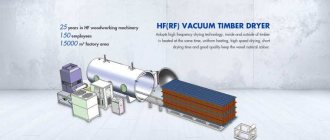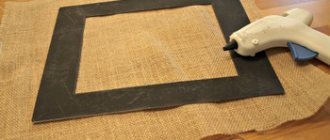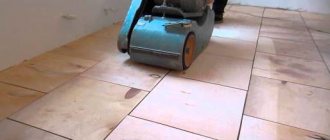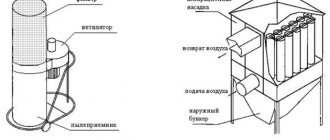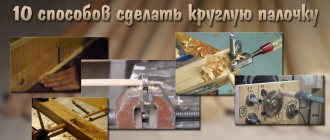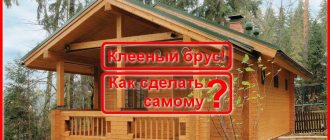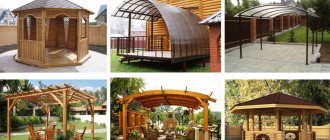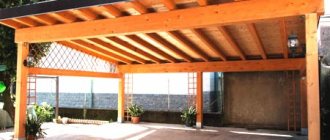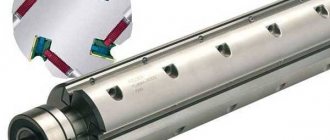Parquet is a durable and durable flooring option, which is why it is often preferred. The easiest way is to buy the material in a store, but some craftsmen decide that making parquet with their own hands is not a waste of time, but an opportunity to get an environmentally friendly and high-quality coating.
Parquet floor installation
Making parquet with your own hands
Manufacturing
Is it possible to make parquet boards with your own hands using simple household tools?
Yes, but with certain reservations:
- Without special equipment, it is possible to produce only stacked or solid parquet without locks for adhesive installation;
It is very difficult to achieve ideal quality at home.
- The tool will not be hand-held, but stationary. At a minimum, you will need a circular saw and a cross-cut saw.
Handmade production is justified only if you have high-precision power tools and lumber
The production of parquet boards itself consists of cutting noble wood into slats of the same size (typically 10x70x500 mm). They are laid on a leveled base using glue with the most precise fit.
After the board is laid, several more operations remain:
- Cycling;
- Puttying gaps. For it, you can use acrylic wood putty matched to the tone or homemade putty made from sawdust and PVA glue;
- Grinding;
- Applying the final coating - varnish or impregnation.
Using glue
Laying parquet boards with glue
This technology differs in that the grooves with tenons are glued together. The main thing you need to know is that you cannot buy water-based glue, otherwise the material will soon deform.
Glue must be applied along the entire length of each groove. If diagonal installation was chosen, then work begins from the corner, and if longitudinal, then from the wall farthest relative to the entrance door.
Ecowood parquet adhesive
Attention! Diagonal installation looks more aesthetically pleasing, but it is associated with more costs (therefore, it will cost more) and installation difficulties.
Prices for flooring adhesives
Flooring Adhesives
Laying
Base requirements
Self-installation of parquet of any type begins with preparing the base. The requirements placed on it by dry (floating) and adhesive installation methods are very different.
Floating installation
In the first case, it is enough to simply level the floor. To remove slopes and noticeable differences, a cement-sand screed (on concrete panels) or a dry screed (on a plank base) is used.
Small differences (up to 5 mm) can be removed with a self-leveling mixture (self-leveling floor); Defects up to 2 mm high are perfectly compensated by the substrate.
The self-leveling floor will level out all defects in the concrete base.
Please note: floating installation puts an end to parquet repairs. Sanding and sanding over a large area is carried out using power tools and requires reliable fastening of the board to the floor.
Adhesive installation
Adhesive installation is much more demanding on the base:
| Parameter | Meaning |
| Maximum difference | 2 mm per 2 linear meters |
| Maximum substrate moisture | 2% |
| Minimum strength grade of concrete screed | M250 |
What effect does the strength of concrete have on the quality of installation? This instruction is due to the fact that during adhesive installation, deforming loads that arise when the linear dimensions of wood fluctuate with an increase or decrease in humidity are absorbed by the adhesive layer and then by the base.
Preparation of the foundation in a typical city apartment-new building is carried out according to the following algorithm:
- A waterproofing layer is laid on the floor - dense polyethylene with overlapping sheets and gluing them with tape;
- A damping tape is laid around the perimeter, which will prevent the transfer of shock loads to the walls;
- A reinforced screed is poured with a thickness sufficient to compensate for differences between the panels;
- After the concrete has completely dried and gained brand strength (approximately 4 weeks from the moment of pouring), it is primed with an epoxy primer, which further increases the strength of the surface layer.
With a plank floor, which for some reason you don’t want to remove, the preparation procedure is slightly different:
- The nails are heated with a hammer to 5-7 mm;
- Curved boards and “propellers” are attracted to the joists with self-tapping screws with a length at least three times greater than the thickness of the board;
- The remaining irregularities are removed with a scraper or a plane;
- Wooden plywood 12-18 mm thick is attached to the flooring. The plywood is pre-cut into squares measuring 0.5x0.5-0.75x0.75 meters and laid apart, with the transverse seams tied. A gap of 2-3 mm is left between the sheets, compensating for temperature and humidity expansion.
Plywood is used to level the plank flooring.
Please note: thick moisture-resistant plywood can easily replace a screed or self-leveling floor on a concrete base. In this case, it is attached to dowel screws; For additional fixation of sheets, it is strongly recommended to use two-component polyurethane glue. The glue is applied to the concrete and leveled with a comb spatula.
Floating installation
It is performed on a substrate and is possible if there are tongue-and-groove locks on the parquet board.
On a perfectly flat base (on a self-leveling floor or plywood), dense polyethylene can be used as a film under a parquet board; if compensation for minor unevenness is needed, foam or porous substrates are used:
- Polyethylene foam;
- Cellulose boards;
- Cork, etc.
The procedure is completely identical to that for laying laminate, with the exception that tongue-and-groove locks are coated with glue or sealant:
- Wedges are installed along the wall, forming a compensation gap of 7-10 mm;
- Then the first row of boards is connected. The last board is sawn in place;
Tip: To minimize the number of cuts, start laying from the longest wall.
- The next rows start with a short board (cut from the previous row). Transverse seams should not coincide in adjacent rows;
- The last row is cut in width so as to provide a compensation gap of the same 7-10 mm.
Adhesive installation
It is done on both screed and plywood using two-component polyurethane adhesive. The glue is applied with a notched trowel, after which the board is laid and loaded during polymerization. And in this case, compensation gaps are left around the perimeter of the room.
Construction of a plywood base on a screed
To prevent deformation of the parquet and increase the thermal insulation of the base, we lay sheets of moisture-resistant plywood, twelve millimeters thick, on the screed.
We cut the sheets into four parts to prevent wave-like deformations and lay them on the base, spaced apart.
We begin laying the plywood from the wall, leaving a gap of at least one centimeter.
Figure 7. Construction of a plywood base along a screed.
We also leave gaps of two to three millimeters between the sheets of plywood for deformation expansion. We attach the plywood to the base with self-tapping screws, recessing the caps into the plywood up to 5 millimeters.
To remove differences between sheets of plywood, sand the surface along the seams with a grinding machine.
Important! After laying the parquet, it is necessary to seal the deformation gaps between the wall and the covering with sealant to prevent moisture from entering the side edges.
Questions and answers
At the end of our material, we have compiled a selection of frequently asked questions and answers to them, which are not thematically included in any of the sections of the article.
- How to make a joint between a parquet board and a tile? Aluminum threshold of sufficient width. It can retain a metallic sheen or be painted in any color. If necessary, thresholds for parquet boards allow you to compensate for the difference in height between coverings;
The junction of the parquet board and tile is hidden by an aluminum threshold.
- What is a parquet board with tongue-and-groove locks made of? The top layer is noble wood, which has maximum wear resistance. Substrate - plywood or cheap softwood with the direction of the fibers perpendicular to the top layer;
- Which parquet board is the best and wear-resistant in relation to household operating loads? Massive, entirely made of oak, beech or ash. Alas, its price is the highest among all competing solutions and reaches 10,000 rubles per square;
The photo shows massive oak parquet.
- What is the service life of parquet boards? For multi-layer parquet with locks, the guaranteed service life is 25 years. The oldest examples of massive parquet have been in service for more than five centuries;
- Why do you need impregnation for parquet board locks? It protects wood without a varnish or wax layer from swelling when water gets into the lock. Instead of impregnation, a transparent or colored sealant for parquet boards is often used: it not only prevents the wood from getting wet, but also masks the seam that has expanded due to moisture deformation;
- Which plinth for parquet boards is better to use? Solid wood, made of wood of the same species that was used to form the top layer of the parquet board.
The solid wood plinth matches the color and texture of parquet.
Why this material
The appearance of your apartment or house will depend on the choice of flooring. Therefore, before settling on any specific option, it is worth studying all the types and thinking about which one will be optimal for you. It is worth noting that wood flooring is significantly different from the well-known laminate. Firstly, these planks consist entirely of valuable wood. Secondly, its materials differ significantly in size from all floor coverings.
Instagram @deparket_kz
In addition, it is not inferior to laminate either in beauty or wear resistance. This type of floor has a very long service life, and in case of damage, replacing one board is not a problem. In addition, it absorbs sound well and retains heat. Therefore, it can be called the strongest and most environmentally friendly material.
How can you make parquet with your own hands?
Indeed, you can make parquet yourself, but how expedient will these actions be? In order to understand this, you will have to understand with examples how this is done.
One Russian family in the early 2000s was able to obtain about 4 pallets of small mahogany and oak bars. And at the same time, they became the owners of an apartment that needed major repairs, since it had only bare walls and ceilings. The family decided to do all the finishing work themselves and came to the conclusion that they could make parquet from the resulting wood material. The idea was crazy, but what do difficulties mean to the hardworking and determined?
Is it possible to make parquet with your own hands?
How to make parquet with your own hands
As a base for the parquet, they made a concrete screed from M-300 sand concrete - thus, they were able to eliminate the unevenness of the floor, the differences of which ranged from 3 to 12 cm throughout the apartment. Next, they laid OSB sheets on the bitumen mastic, additionally secured with dowels. The choice fell on OSB, because this material is very durable and not afraid of moisture. Next, the slabs were covered with a special primer.
On a note! To make parquet with their own hands, the family used available tools and the material itself, which miraculously fell into their hands. However, parquet made independently at home can only be made without locking joints, which increase the solidity of the coating. This can be a massive or stacked version of the material. Such parquet can only be fixed to the floor using glue.
Hand-made parquet laid
Parquet cutting was carried out using stationary circular and cross-cut machines. The resulting slats had to have the same size - in that case it was 10x70x500 mm. The moisture content of the wood should be low - about 9%.
The finished boards were fixed to the base using ordinary parquet glue. At the same time, sometimes it was necessary to individually adjust the planks to each other. After installing the floor, the parquet was sanded, the gaps filled with acrylic wood compound, sanded and varnished.
Parquet floor after scraping and sanding
The same floor after varnishing
Parquet floor in the nursery
An example of a finished parquet floor in another room
Master Class. Independent production of parquet floors with a heating system . Downloadable file (click the link to open the PDF in a new window).
Surface preparation
Before laying wooden material, it is necessary to prepare the surface. It should be perfectly flat and smooth. If the unevenness on the floor is more than 2 centimeters, then it must be filled with cement screed. Before doing this, take measurements using a level and place beacons throughout the room. To fix them, 3 metal strips are installed. They are placed in parallel across the entire room on cement posts installed in those places where there are recesses. The strips should lie strictly horizontally, then fill the floor exactly according to their level.
Pixabay
If the unevenness does not exceed 2 centimeters, then a self-leveling mixture can be used. However, this type of filling has a significant drawback - it will take about three weeks for the screed to completely dry and harden.
The work can be considered completed after you treat the dried screed with a primer and then with adhesive mastic. The floor is ready.
Excellent wooden parquet floor with your own hands
Excellent wooden parquet floor with your own hands
Making such a floor yourself is extremely simple. To do this, we cut these wooden triangles. The degrees of angles are indicated in the figure. This element is good because it can easily form a beautiful and at the same time beautiful pattern.
Set the required angles and cut
Let's start laying our miracle parquet. The photo shows the installation of the corner
As you can see, you can start from almost anywhere
The more precise the manufacturing of the triangular element, the fewer gaps and irregularities during installation. The photo shows how to trim triangles using a paper sheet
As you can see, it easily fits into the required space
The parquet installation process is in full swing
Our site is almost finished
Installation errors
Violations of technology when installing parquet floors lead to the appearance of various defects:
- Parquet that has come away from the base, which “bounces” underfoot without swelling or deformation, indicates a damaged adhesive layer. Perhaps low-quality cheap glue was used, or sanding and sanding of the floor began before the glue set.
- Parquet that is swollen by the house - perhaps it was laid on a wet base, the technological gaps were not maintained, or there was a flood.
Figure 13. Swollen parquet.
- Gaps between the dies appear when laying damp parquet or too low humidity in the premises.
- Deformation of the dies is possible if varnishing was carried out before the glue had completely dried, a large amount of varnish was applied in one day, or the unstable parquet was covered with film.
- Failed parquet means that voids have formed under the parquet due to the destruction of poor-quality screed.
- The curvature of the drawing indicates a low qualification of the master or low-quality material.
- Cracks in the varnish coating indicate a violation of the varnishing technology. It is possible to apply too thick a layer at one time.
- Parquet creaking when moving on it is possible if the screed underneath is of poor quality, the plywood is poorly secured, or low-quality glue, plywood or parquet is used.
By following the instructions, following the sequence and installation technology, it is not difficult to create a strong, beautiful and durable parquet flooring with your own hands.
Working with artistic parquet
Sometimes craftsmen decide to take a completely desperate step and make artistic parquet with their own hands. This is also a type of parquet flooring, but the materials are laid in a special way. In this case, the design is made from several types of wood, and may also have patterns made separately.
On a note! Artistic parquet was first used for flooring back in the 16th century. Its production was considered a very complex process, and therefore the labor costs were equal to those required when weaving expensive carpets. Such parquet was used only for decorating halls in castles, palaces, and houses of the nobility.
But to this day, artistic parquet has not outlived its usefulness, although it continues to be a very painstaking type of handmade work, and therefore is very expensive. The work is complex in that it requires care, a sense of taste, responsibility, the right choice of materials - everything, even the most seemingly insignificant properties of the wood used, must be taken into account.
Artistic elements of parquet flooring
Techniques for making artistic parquet
To make artistic parquet, types of wood such as oak, ash, maple, walnut, etc. are usually used. The denser the material is used, the longer the floor will last, it will be easier to repair if necessary, and it will be faster to work with such material. The beauty of the finished drawing will also depend on how the wood was processed. For example, cutting a log can be done in different ways and this will also affect the appearance of the floor.
Prices for Papa Carlo parquet
Photo of artistic parquet
On a note! For artistic parquet, cross-cut wood is usually used.
Table. Options for artistic parquet designs.
| Name | Description |
| In this case, several types of planks are used to create a pattern, which, after processing, are attached to the base board. The most popular option for making a drawing. | |
| The finished drawing is placed deep into the base. Materials such as metal, amber, and mother-of-pearl can be used for decoration. A less durable version of artistic parquet, but more expensive. | |
| In this case, the pattern is created by cutting grooves for the design, which itself is made of dark wood. The method is very ancient and is now practically not used. |
Also, parquet flooring can be laid with a “rosette” (the parts have an oval or round shape, located in the middle of the pattern), a “border” (a part of the floor with a certain motif that divides the space of the room), modules (in this case, the parquet is assembled from individual panels - original geometric compositions are obtained).
Advantages and disadvantages of artistic parquet
It’s not for nothing that artistic parquet is still valued today. It has a number of advantages:
- durability due to the use of hard wood;
- environmental friendliness;
- excellent thermal insulation performance;
- beauty and originality;
- the ability to create your own pattern.
Artistic parquet has many advantages
Disadvantages include high cost, difficulty in manufacturing, low resistance to frequent and strong mechanical stress.
Making artistic parquet at home
The high cost of this parquet and at the same time the desire to still make such floors force home owners to try making this parquet with their own hands.
Step 1. The first step is to draw up a design project, which will mark the dimensions, the place where the pattern was created, as well as the main pattern of the parquet.
Example of a finished design project
Step 2. Next, the parquet floor is made using the usual technology, and plywood templates for the future pattern are also created.
Installation of CNC-made plywood templates
On a note! Work should be carried out at a temperature of +17-23 degrees, humidity - about 40-60%.
Step 3. Using the templates laid on the floor, the future pattern is milled into the parquet base.
Milling the future pattern in parquet
Step 4. Unnecessary elements are removed - gaps appear for installing artistic details.
Removing unnecessary elements
Step 5. The finished gaps are cleaned of any resulting dust, sawdust, or wood chips.
Sawdust and dust are removed
Step 6. According to the sketch, design details are made from pieces of wood of different types, which are then glued into the main parquet in previously prepared places. Gluing is carried out using an adhesive composition intended for parquet. A hammer can be used to force the parts into place.
Gluing artistic parquet parts
Parts are driven in with a hammer
Step 7. Insert the entire picture in the same way.
The whole picture is pasted
Step 8. The parquet floor with the finished pattern is sanded with a special machine.
Sanding parquet floors
Step 9. A primer coat of varnish is applied. It is spread over the surface with a spatula evenly and without leaving empty spaces.
Applying a primer coat of varnish
Step 10. After drying, the varnish coating is sanded using a special machine.
Sanding the varnish
Step 11. The floor is cleaned of dust with a vacuum cleaner - preparation is made for applying the final varnish layer.
Preparing the floor for the final coat of varnish
Step 12. The final layer of varnish is applied with a roller, and in hard-to-reach places and along the walls - with a brush.
Applying the final coat of varnish
Video - Making palace parquet
Brushed parquet boards - what is it?
At home, you can also make so-called brushed parquet . This is one of the new technologies for creating artificially aged floors. The material undergoes special processing, during which it acquires an original appearance. By the way, this processing method can significantly increase the service life of the parquet base.
Parquet board Goodwin American Walnut Edinburgh, embossed, brushed
Aging of wood occurs through treatment with a hard metal brush, which removes the soft fibers of the boards, while the hard ones remain in place. This way, the textures on the wood will be clearly visible, and if you cover them with oil, the natural beauty will become clearly visible.
After the soft wood fibers are removed, the boards are covered with a patina (special paint), which helps make the wood structure more obvious, emphasizes its porosity, or other materials. Also, the boards can be tinted - that is, the wood will change its color by a couple of tones. Usually it becomes somewhat darker than it was. Wood can be coated with varnish, wax or oil.
Brushed wood floor
